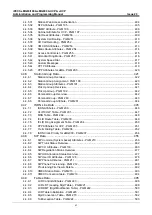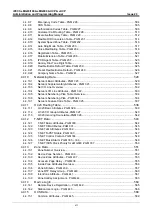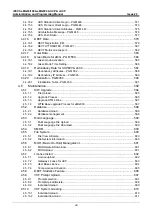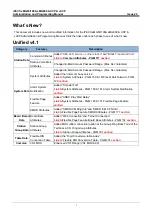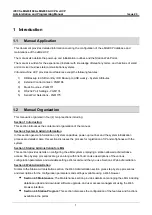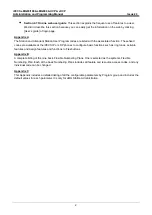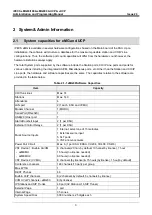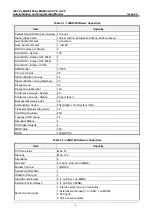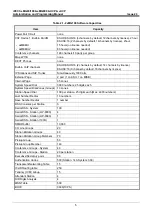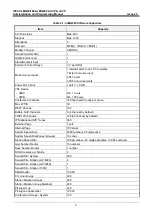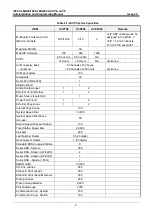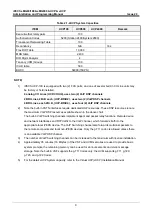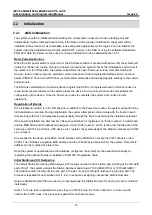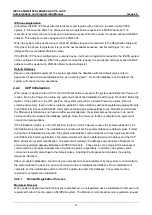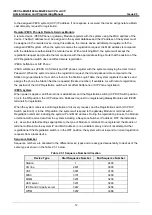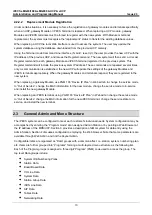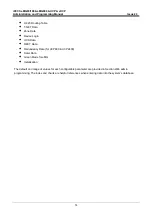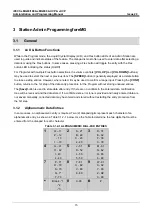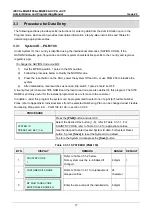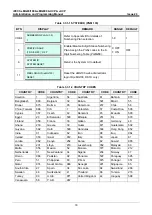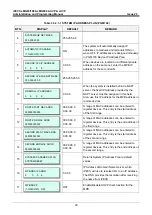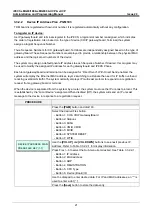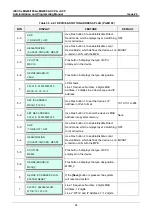
iPECS eMG80/100& eMG800 & UCP & vUCP
Administration and Programming Manual
Issue 2.3
10
2.2
Initialization
2.2.1
eMG Initialization
The system should be initialized before starting the configuration to assure a known starting point and
automatically register installed boards. Also, if the Nation Code requires modification, the system will be
initialized in the process so as to establish tones and gains appropriate for the region. You can initialize the
system using the Initialization switch (Dip-switch SW1, pole-2) in the KSU or using the software Initialization
PGM 450. Note the former must be used to change the Nation Code as detailed section 3.3.1.
Basic Power-Up Routine
When the KSU power switch is turned On or the KSU Reset button is pressed with power ON, the system will
initiate the “Power-up” routine. During the Power-Up routine the system checks the Initialization switch and, if
the switch is in the Off position, the system will perform the basic Power-up routine; clear all scratch-pad
memory, load run-time programs, establish communications with each registered Interface board, Function
board, iPECS IP Phone and LDP Phone, send Restart commands and load appropriate settings to the boards
and terminals.
The KSU also will attempt to communicate and register the EKSU. If a registered board or terminal does not
respond after several attempts, the system places the device in an out-of-service mode but maintains the
configuration of the device. Once the Power-up routine is complete, the system will conduct normal
operations.
Registration of Boards
If the Initialization switch is in the ON position, in addition to the Power-Up routine, the system will perform the
full Initialization procedure. During initialization, the system attempts to communicate with the board in each
Slot, starting with Slot 1 and progressing sequentially through the slots, to determine the installed equipment.
If the board is installed, the Slot number (“Sequence Number”) is registered, an “Order number” is determined
and the MPB MAC and IP address are assigned. Using “Order number”, which is the order that devices of the
same type (CO/IP Line, Station, VSF device, etc.) register, the system assigns the Station numbers and CO/IP
Line numbers.
An exception to the above is the MAC and IP address of the VOIB which covers the VoIP channels on the
VVMU. The VOIB has a separate MAC address and the IP address is assigned from the system. Note this IP
address can be modified at a later time.
Once the system is operational and the database configured, the system can be expanded manually by
registering the optional boards as detailed in PGM 235, Registration Table.
Initial Station and CO Numbering
The default Station Numbering Plan assigns a Three-digit number to each station port. Starting at the first (left)
port of Slot 1, the system assigns the Station Numbers beginning at “100 (eMG80/100) or 1000 (eMG800)”.
The Station number increments for each port in the slot, moving to the right until reaching the last port. The
process is repeated for each Station slot (1 to 6) in sequence assigning consecutive Station Numbers.
Note the Station Number Plan can be two to four digits and the Station Number for each port can be modified
individually.
Slots 7 to 14 are then registered and, since they are CO/IP Lines, the Order numbers 1 to 8 are used to
number the CO/IP Lines. The process is repeated for each device type.

